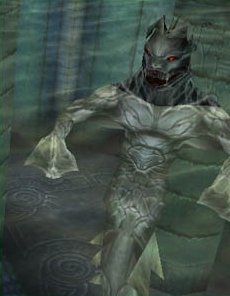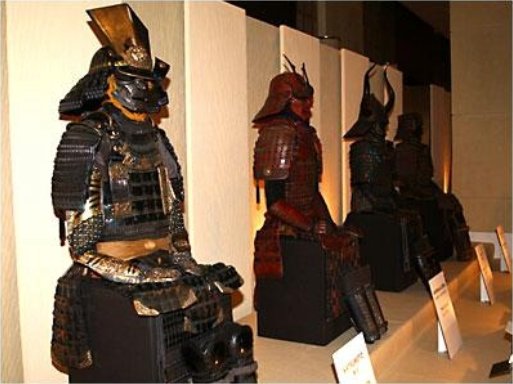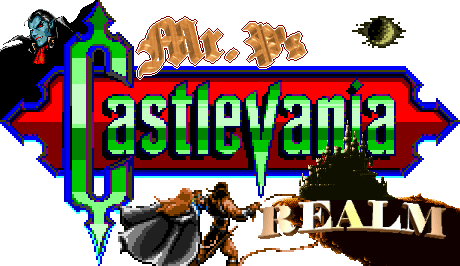
![]() Castlevania
Arsenal Origins
Castlevania
Arsenal Origins ![]()
| Item Name: | Platinum Armor, Platinum Chain, Platinum Corset, Platinum Plate, Platinum Stud and Platinum Tip |
| Games In: | Symphony of the Night, Circle of the Moon, Harmony of Dissonance, Dawn of Sorrow and Portrait of Ruin |
| Description: | "Platinum (Pt) is a chemical element (atomic number 78) long since known. It was already used by pre-Precolombians. The Spanish called it 'platina,' which means 'little silver,' because it was seen as an impurity in the silver they were mining. This metal is corrosion-resistant, has excellent high-temperature characteristics, and stable electrical properties; it's used in jewelry, laboratory equipment, electric contacts, etc. Platinum is very precious--it usually costs about twice as much as gold. The second picture shows the alchemical symbol of platinum made by joining the symbols of silver and gold." |
| Picture(s): |
  |
| References: | chemistry.about.com/od/alchemicalsymbols/a/alchemypt.htm www.uni-wuerzburg.de/mineralogie/gallery/Bilder/platinum.jpg |
![]()
![]()
| Enemy Name: | Poncho |
| Games In: | Portrait of Ruin |
| Description: | "A simple garment designed to keep the body warm; it's traditional clothing in most of Latin America and Spain." |
| Picture(s): |
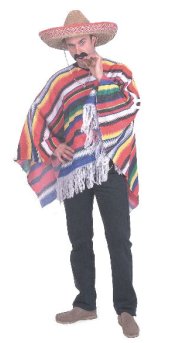 |
| References: | www.partydomain.co.uk/d-commerce/media/large_21860.jpg |
| Enemy Name: | Porkpie Hat |
| Games In: | Portrait of Ruin |
| Description: | "A porkpie hat (or pork pie hat) is a kind of felt hat whose origin traces back to the mid-19th century. It's similar to the fedora but with a flat top. They are often associated with jazz and blues musicians plus the music forms' fans. The picture shows the jazz saxophonist Lester Young (1909-1959). (See also Fedora.)" |
| Picture(s): |
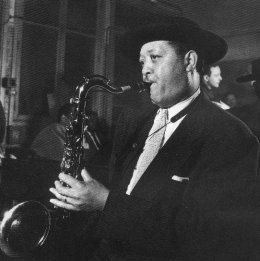 |
| References: | www.dcjazz.com/photo/lester.GIF |
![]()
![]()
| Item Name: | Rapier |
| Games In: | Symphony of the Night, Aria of Sorrow, Dawn of Sorrow and Curse of Darkness |
| Description: | "The term 'rapier' was adopted in England to describe a civilian thrusting-sword intended for dueling and self defense. Most likely evolved from the broadsword, the Rapiers were used during the 16th and 17th centuries; contrary to popular belief, they were long, heavy and slow to use. (See also 'broadsword.')" |
| Picture(s): |
 |
| References: | www.krystalspage.featureditems.com/ p11.asp |
![]()
![]()
| Item Name: | Ring of Arcana |
| Games In: | Symphony of the Night |
| Description: | "'Arcanum' comes from the Latin 'arcere'--it usually refers to occult mysteries and doctrines. The plural of 'arcanum' is 'arcana.' " |
![]()
![]()
| Item Name: | Ring of Ares |
| Games In: | Symphony of the Night |
| Description: | "Son of Zeus and Hera, Ares is the Greek god of war; he is considered murderous and bloodstained, but he is also a coward. His bird is the vulture and his animal the dog." |
| Picture(s): |
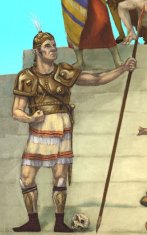 |
| References: | http://www.mythweb.com/gods/Ares.html |
![]()
![]()
| Item Name: | Ring of Feanor |
| Games In: | Symphony of the Night |
| Description: | "Son of Finwe and Miriel, this elf was the great blacksmith who created the three gems called the Silmarils. He was mortally wounded by Gothmog, the Lord of the Balrogs, during the Battle Under the Stars. 'Fëanor' means 'Spirit of Fire.' For further information, read also The Silmarillion by J.R.R. Tolkien." |
| Item Name: | Ring of Varda |
| Games In: | Symphony of the Night |
| Description: | "Varda is the the wife of Manwë in The Silmarillion. She is the one who created the stars. Varda is also called Elbereth in The Middle-Earth." |
| Picture(s): |
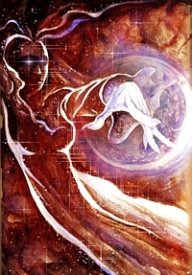 |
| References: | fan.theonering.net/middleearthtours/valar.html |
| Item Name: | Roc Wing |
| Games In: | Circle of the Moon |
| Description: | "The rock is a giant bird in Arabian mythology, large enough to carry an elephant in its claws. It is said to never land on earth--only on the mountain Qaf, the center of the world." |
| Picture(s): |
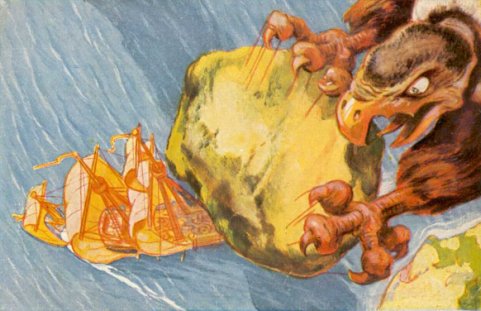 |
| References: | www.stefanmart.de/02_sindbad/023_sindbad_10.jpg |
![]()
![]()
| Item Name: | Ruby, Ruby Circlet and Ruby Corset |
| Games In: | Symphony of the Night, Harmony of Dissonance, Lament of Innocence and Portrait of Ruin |
| Description: | "A variety of Corindon (Al2O3) that is red because of the presence of Cr3+. Corindon is one of the hardest stones in the world. (See also 'sapphire.')" |
| Picture(s): |
 |
| References: | cgi.ebay.ca/ws/eBayISAPI.dll?ViewItem&category=10257&item=4976375035&rd=1semsci.u- strasbg.fr/corindon.htm |
![]()
![]()
| Item Name: | Rue |
| Games In: | Order of Ecclesia |
| Description: | "The common rue (Ruta graveolens) is a plant native to southern Europe. It can be used as a medicinal herb and as a condiment. Rue is mentioned in the Bible, and in mythology it is said to be a protective against basilisk's breath. (See the description of the Basilisk in the Enemy Origins pages.)" |
| Picture(s): |
 |
| References: | www.tuin-thijs.com/zomerbloeiers%20engels.htm |
![]()
![]()
| Item Name: | Rune Ring and Rune Sword |
| Games In: | Symphony of the Night, Aria of Sorrow and Dawn of Sorrow |
| Description: | "Runes are viking letters. The most famous--or rather infamous--rune is the one representing the letter S, which was used as the emblem of the "Waffen SS," who were Hitler's personal bodyguards." |
| Picture(s): |
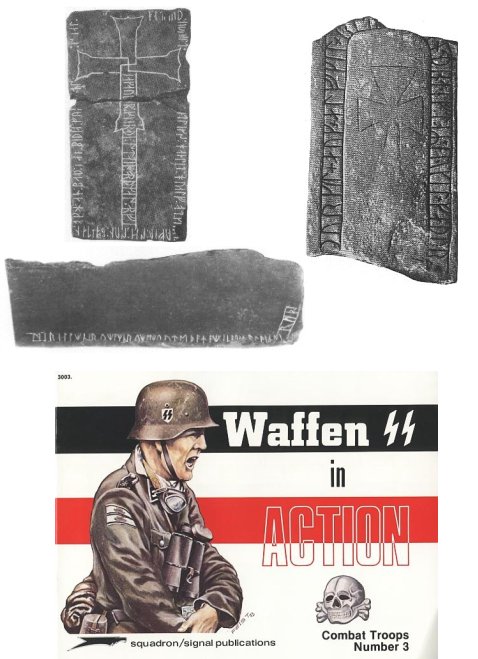 |
| References: | home.no.net/ahruner/se-rune-allingbo.jpg home.no.net/ahrunes/bo-rune-bodilsker3.jpg home.no.net/ekerilar/no-rune-by.jpg www.ares.cz/hobby/ squadron/picture/3003.jpg |
![]()
![]()
| Item Name: | Sage |
| Games In: | Order of Ecclesia |
| Description: | "The common sage (Salvia officinalis) is a small plant of the mint family native to the Mediterranean region. It is commonly grown as a kitchen and medicinal herb or as an ornamental garden plant." |
| Picture(s): |
 |
| References: | www.botanical.com/botanical/mgmh/s/sages-05.html |
![]()
![]()
| Item Name: | Sallet |
| Games In: | Harmony of Dissonance and Curse of Darkness |
| Description: | "A common helmet of the 15th century, varying in style according to national preferences. Most of them are characterized by a flared tail, and others were sometimes fitted with visors. There is no clear distinction between a sallet, the armet and the barbuta. (See also 'armet' and 'barbuta.')" |
| Picture(s): |
 |
| References: | www.knightsedge.com/armor/german-sallet-helm.htm |
![]()
![]()
![]()
![]()
| Item Name: | Sapphire and Sapphire Corset |
| Games In: | Harmony of Dissonance, Lament of Innocence and Portrait of Ruin |
| Description: | "Originally, this was the blue variety of Corindon; recently, this name has also been used for all Corindons that are not rubies. Its color is the result of the presence of iron or titane. (See also 'ruby.')" |
| Picture(s): |
 |
| References: | semsci.u-strasbg.fr/corindon.htm |
![]()
![]()
| Enemy Name: | Sarissa |
| Games In: | Portrait of Ruin |
| Description: | "The sarissa is a Macedonian pike whose invention was credited to Philip II, the father of Alexander the Great. It had a short iron head shaped like a leaf and a bronze shoe allowing it to be anchored to the ground. Because of its great weight (5 kg) and length (3 to 7 meters), it was constructed of two halves and joined by the means of a metal collar before battle." |
| Picture(s): |
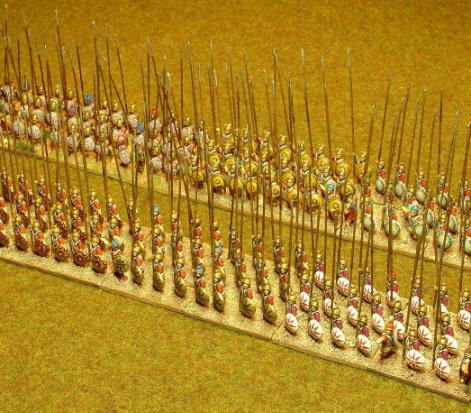 |
| References: | www.geocities.com/hoplongr/Sarissa02.jpg |
| Item Name: | Satan's Ring |
| Games In: | Aria of Sorrow and Dawn of Sorrow |
| Description: | "Satan is an alternate name for the Devil. It means 'The Accuser.' " |
| Picture(s): |
 |
| References: | www.rotten.com/library/religion/satan/satan.gif |
![]()
![]()
| Item Name: | Scale Armor |
| Games In: | Harmony of Dissonance and Dawn of Sorrow |
| Description: | "Scale armor is a very early form of armor and is likely present in any warring culture that has both tanning and metalworking skills. They are less expensive but also less maneuverable than chain mail. The scales are made of metal and are always sewn onto a hardened cloth or leather backing." |
| Picture(s): |
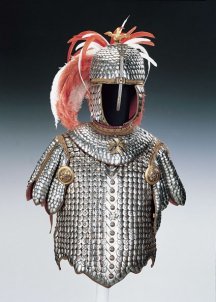 |
| References: | www.gloryofdresden.com/modularbuilds/scalearmor-co.html |
![]()
![]()
| Item Name: | Schiavona |
| Games In: | Curse of Darkness |
| Description: | "The Schiavona is a basket-hill sword originally used by the guard of the Doge of Venice. The guards were mainly Dalmatian Slavs (Schiavoni). Since it was effective and attractive, it was soon in use all throughout Europe." |
| Picture(s): |
 |
| References: | www.armourclass.co.uk/Data/Pages/17Century_10.htm |
![]()
![]()
| Item Name: | Scimitar |
| Games In: | Symphony of the Night and Aria of Sorrow |
| Description: | "The term 'scimitar' is a derivative of the Persian 'shamshir'; it refers to a sword with a curved blade from western Asia. In reality, there aren't 'historic swords' called scimitar--even the Indian 'talwar' and the Turkish 'kilij' are included in this category. (See also 'talwar.')" |
| Picture(s): |
 |
| References: | -jodysamson.com/images/News/short%20scimitar.jpg www.nmm.ac.uk/collections/images/300/E1154.jpg |
![]()
![]()
| Item Name: | Sherman's Ring |
| Games In: | Aria of Sorrow |
| Description: | "William Tecumseh Sherman (1820-1891) was one of the most famous Nordist generals during the American Civil War. His name was later given to a World War II tank." |
| Picture(s): |
 |
| References: | www.free-definition.com/William-Tecumseh-Sherman.html |
![]()
![]()
| Enemy Name: | Shogun Helmet |
| Games In: | Portrait of Ruin |
| Description: | "Shogun is a military rank and historical title in ancient Japan; the rank is equivalent of general. Oda Nobunaga (1534-1582) is remembered in Japan as a one of the most brutal figures of the Sengoku period; he conquered most of Japan before he was forced to commit suicide. He was also cultivated, modernizing greatly the Japanese army and economy." |
| Picture(s): |
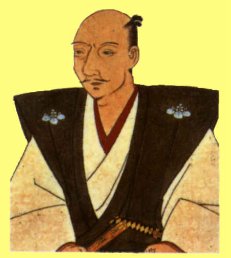 |
| References: | www.samurai-archives.com/nobunaga.html |
| Enemy Name: | Short Sword |
| Games In: | Symphony of the Night, Aria of Sorrow, Dawn of Sorrow and Curse of Darkness |
| Description: | "'Short sword' is used to describe the size of a sword rather than a particular type of sword. This term was popular until the early middle ages when the standard sword-length grew. Short swords were effective in close-quarters melee and were often carried by spearmen and archers as secondary weapons. Any bladed weapon longer than a dagger but shorter than a long sword, like the Roman gladius, is referred to as a 'short sword.' (See also Gladius and Long Sword.)" |
| Picture(s): |
  |
| References: | www.aceros-de-hispania.com/image/SwordsToledo/swords-romans-cv.jpg www.mwart.com/images/p/Swords_European_Short_Sword_N8802_2060.jpg |
| Item Name: | Shotel |
| Games In: | Symphony of the Night |
| Description: | "This sickle is an agricultural tool used for cutting grass and hay and for clearing foliage; it was also used as a weapon. The shotel is an North African sickle-sword effective at slashing and getting around an opponent's shield." |
| Picture(s): |
 |
| References: | members.aol.com/dargolyt/TheForge/sickle.htm |
![]()
![]()
| Item Name: | Silver Gun |
| Games In: | Aria of Sorrow and Dawn of Sorrow |
| Description: | "According to popular belief, the only way to kill an unholy monster with a hand gun is to use bullets made of silver." |
![]()
![]()
| Item Name: | Skull Necklace |
| Games In: | Aria of Sorrow |
| Description: | "In the European and American versions of Aria of Sorrow, the skull necklace is sometimes dropped by a monster called Curly (it's known as 'Kali' in the Japanese version). Kali is the Indian goddess of death, and she is represented as four-armed woman wearing a necklace adorned with skull heads." |
| Picture(s): |
 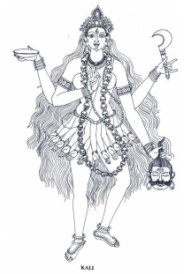 |
| References: | www.carnaticcorner.com/hig/la-kali.jpg |
![]()
![]()
| Item Name: | Spirit of Fuji |
| Games In: | Curse of Darkness |
| Description: | "The origin of the name Fuji is unclear, but it's claimed that it could mean 'without equal' or 'never-ending.' The term Fuji usually refers to Mount Fuji, which is in the West referred to as 'Fujiyama.' " |
| Picture(s): |
 |
| References: | www.mt-fuji.gr.jp/gallery/06.jpg |
![]()
![]()
| Item Name: | Staurolite |
| Games In: | Symphony of the Night |
| Description: | "A black-brown Silicate (Fe2+, Mg)2(Al, Fe3+)9[SiO4]4(O, OH)2 whose crystals are often cross-shaped." |
| Picture(s): |
  |
| References: | www.geology.neab.net/pictures/rock439.jpg www.mindat.org/picshow.php?id=1491 |
![]()
![]()
| Enemy Name: | Studded Choker |
| Games In: | Portrait of Ruin |
| Description: | "A choker is a tight-fitting necklace worn high on the neck." |
| Picture(s): |
 |
| References: | www.thecostumer.com/cfwebstore/images/Costumer%20Images/studchoker_thumb.jpg |
| Enemy Name: | Succubus Boots |
| Games In: | Portrait of Ruin |
| Description: | "Please read the description for the Succubus in the Demon Origins section." |
| Enemy Name: | Surcoat |
| Games In: | Portrait of Ruin |
| Description: | "The surcoat was the military robe of the medieval European knights; it was used to cover their armor. Because the surcoat first appeared in Europe during the crusades, it was first thought to have been designed to keep the hot sun off of the knights' armor. Since it remained popular in the colder climates of Europe, many historians say that their original purpose was to protect the chain mail from water and dampness. The surcoats were always decorated with the heraldic symbols of the wearer; when a knight wore a great helm, these markings were often the only way to recognize him as friend or foe. The first picture is an example of crusader's surcoat. (See also Chain Mail.)" |
| Picture(s): |
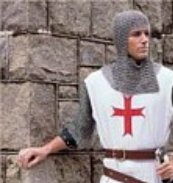 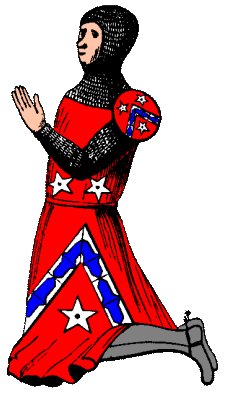 |
| References: | www.brianbero.com/surcoats.html www.heraldsnet.org/saitou/parker/Jpglosss.htm |
| Item Name: | Sushi |
| Games In: | Symphony of the Night and Lament of Innocence |
| Description: | "This word means 'rice'; it's used to describe a small piece of raw fish on a bed of vinegared rice. Sushi is two centuries old. At the beginning, it was but a method of preserving fish." |
| Picture(s): |
 |
| References: | www.kaiseki.com/SushiClub/ |
